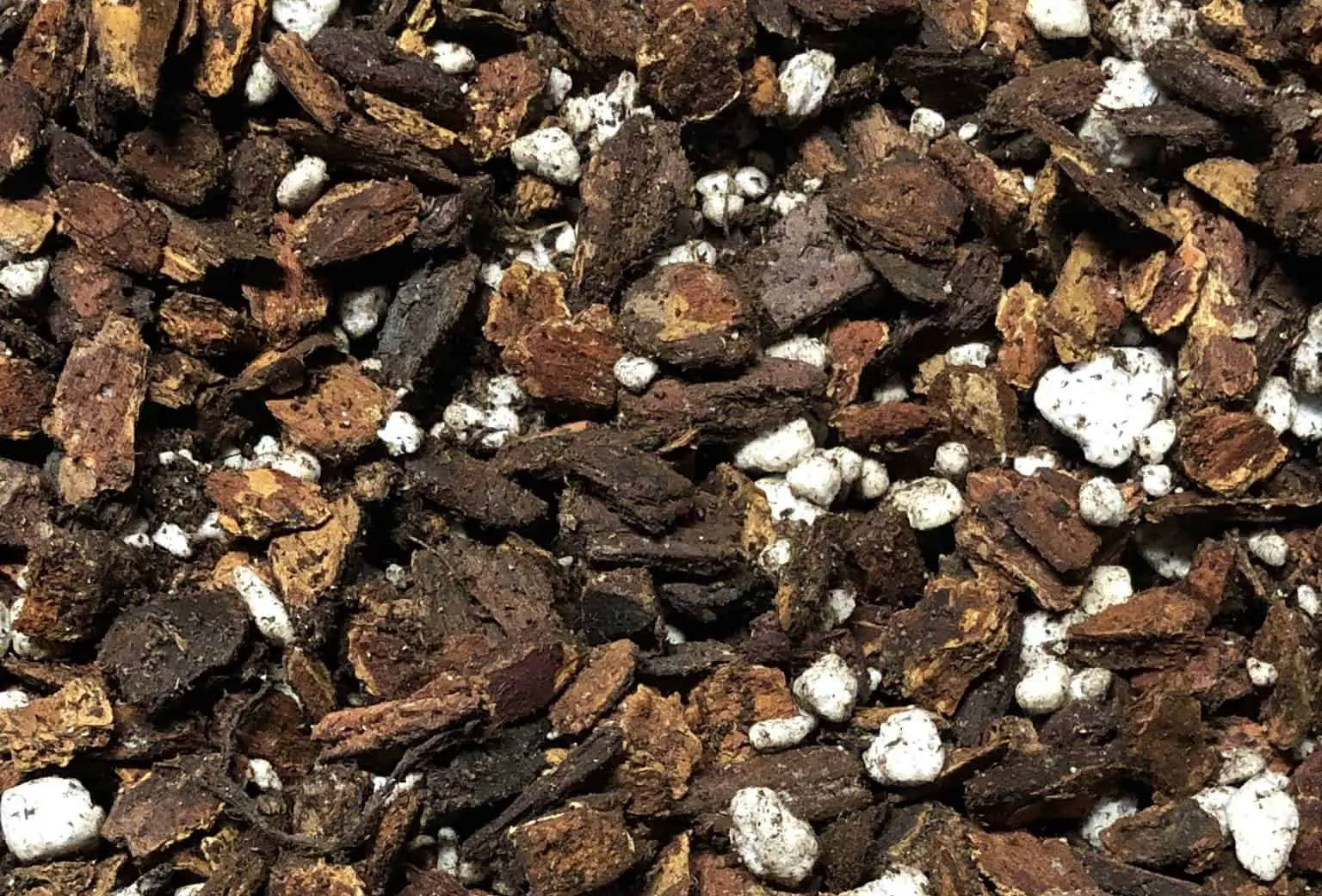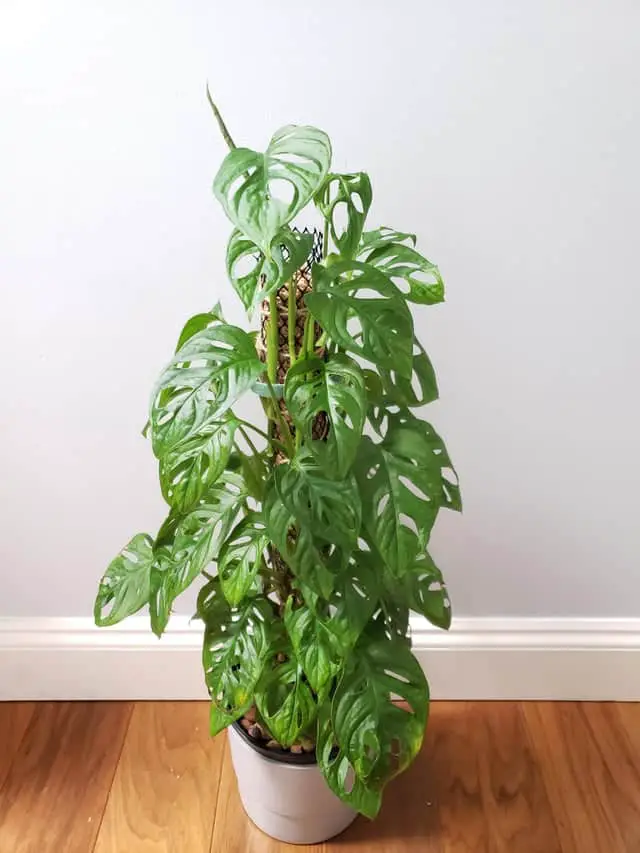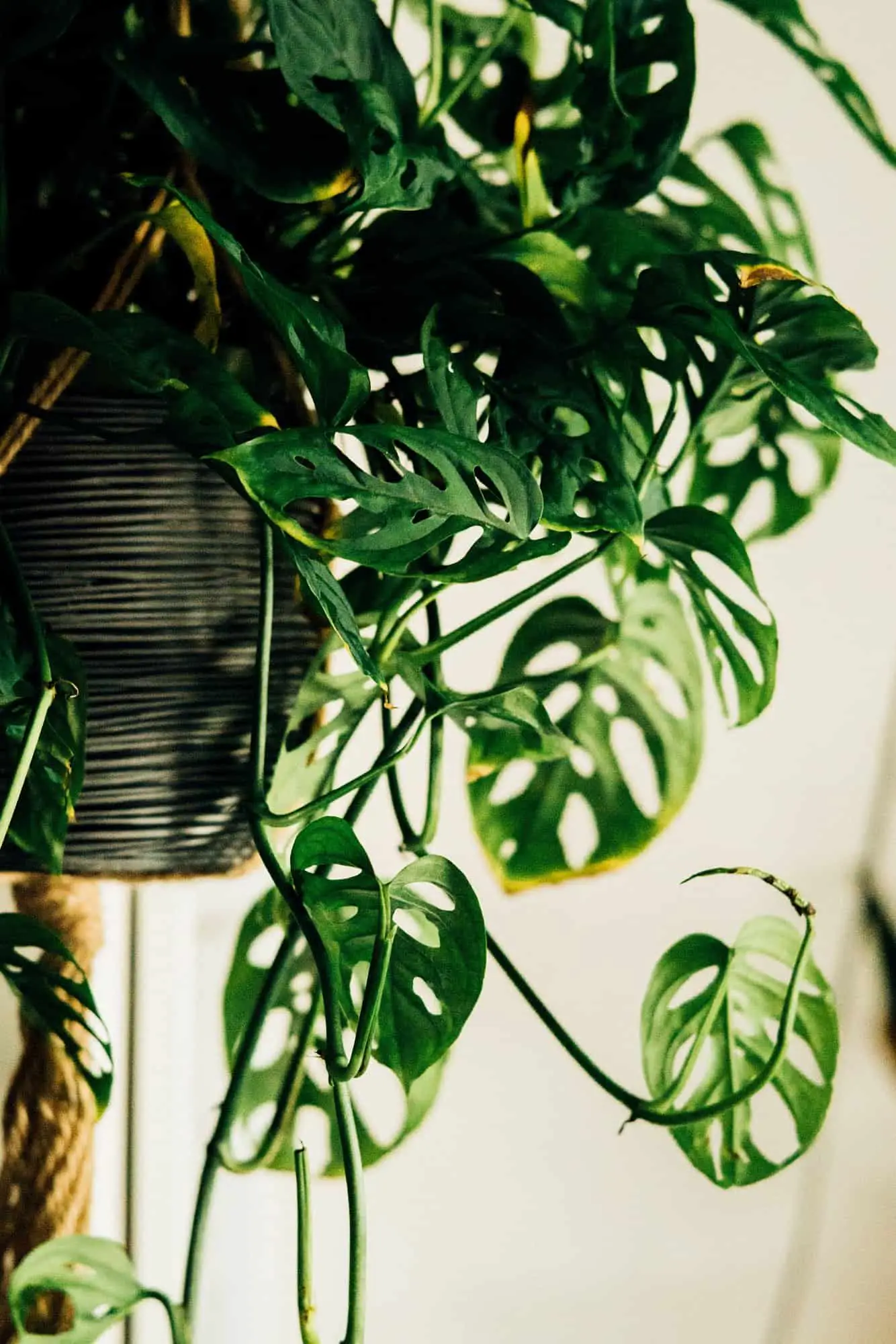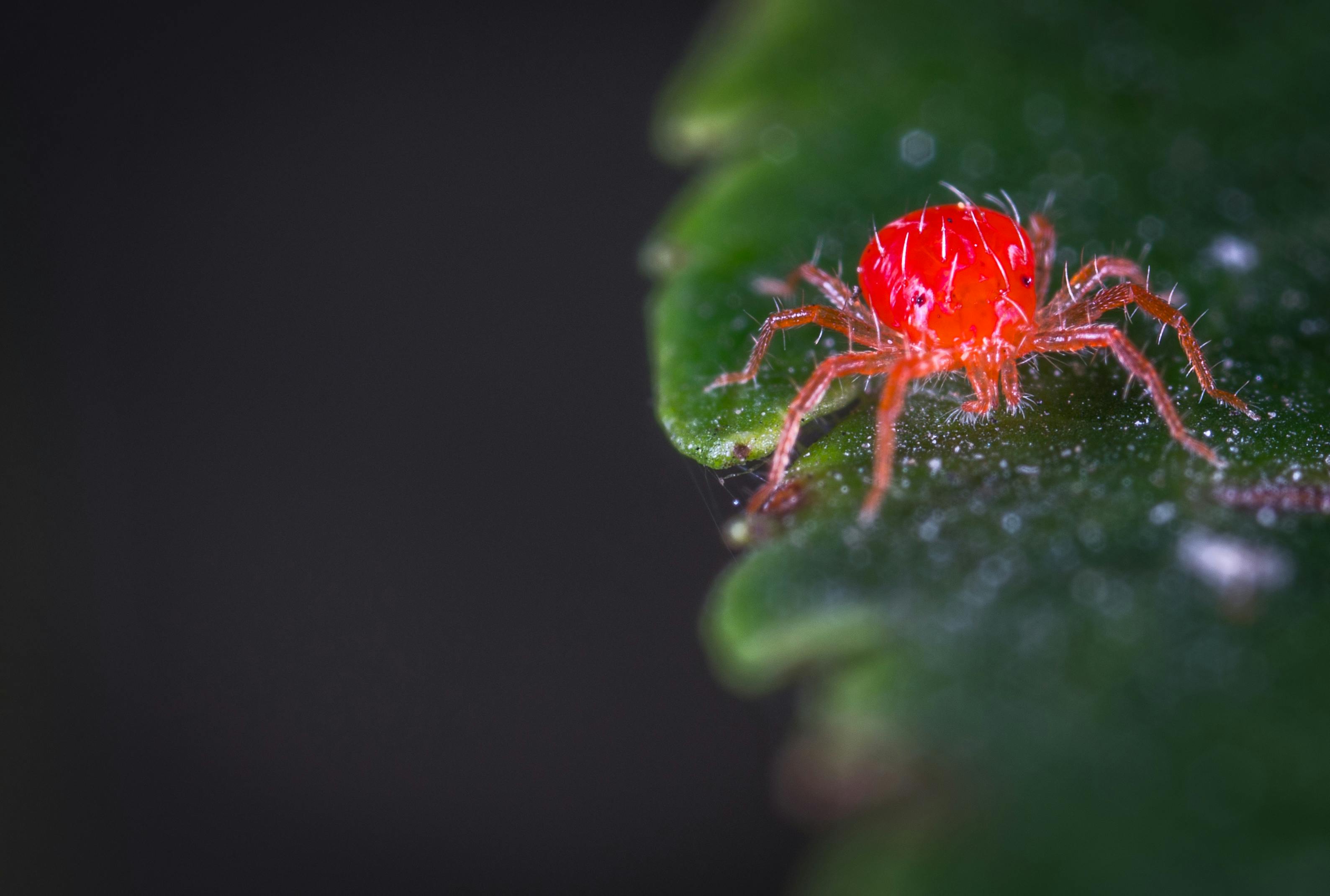Monstera adansonii is a popular houseplant that is known for the holes in its leaves. Because of these holes in the leaves, it is commonly referred to as Swiss Cheese Plant. Some of Monstera adansonii’s other nicknames include Adanson’s Monstera, Monkey Mask, and Five Holes Plant. Although this plant has a unique appearance, it is not a very fussy plant.
Monstera adansonii will thrive if placed in a spot that receives bright, indirect light for 4-6 hours per day. In addition, allow the top three to four inches to completely dry between waterings. Although these plants prefer to climb up moss poles, they will do well in hanging baskets if pruned frequently.
The rest of this article will describe some of the history behind these houseplants and outline its care requirements.
About Monstera adansonii
Monstera adansonii is a herbaceous, climbing plant that is native to the tropical forests of Central and South America. It is typically found in low elevation areas along river valleys. This plant is classified as a Monstera which is a genus comprised of about 50 species. The name Monstera is Latin for “monstrous” or “abnormal.”
Monstera adansonii was first discovered by the French botanist, Charles Plumier in 1693. Although Plumier called the plant Arum hederaceum, aplis foliis perforatis (Latin phrase loosely meaning plant in the arum family that has perforated leaves) in his notes, the illustrations clearly show that he was describing Monstera adansonii. In Plumier’s description of the plant, he noted that natives used Monstera adansonii as a treatment for snake bites.
In 1763, the name Monstera was first used by Adonson in his book titled Description des Plantes de L’Amerique. This book actually includes Plumier’s notes and sketches (see images below).
You can download a scanned copy of this book below. Keep in mind that it is in French.
During the decades following the publication of Adonson’s book, Monstera adansonii was widely cultivated in greenhouses throughout Europe. In 1830, a botanist named Schott reexamined the species. That is why you may see Monstera adansonii var. Schott used as a synonym for Monstera adansonii.
It is important to mention that Monstera adansonii looks very similar to another species called Monstera obliqua. Unlike Monstera adansonii, Monstera obliqua can be quite expensive. Unfortunately, some people have ordered a Monstera obliqua only to receive the less expensive Monstera adansonii in its place. So how can you tell the difference? Monstera obliqua tends to have more holes than Monstera adansonii and thinner leaves. If you are purchasing a Monstera obliqua, make sure you are ordering from a reputable seller.
Leaf Fenestration In Monsteras
One of the characteristics that make Monstera adansonii so popular among plant lovers is the holes in its leaves. The technical term for these holes is fenestrations. Leaf fenestration is a term that describes how these plants make their holes. As Monstera vines mature, the leaves develop holes in the leaves called fenestrations (Zuchowski, 2005). These fenestrations form by programmed cell death.
Scientists have found that leaf fenestration is an evolutionary adaptation that aids in plant survival. A research study conduct at the University of Colorado found that Monstera plants that contain leaves with more holes were able to capture more water. In addition, holes in leaves reduced the amount of wind damage (Lubenow, 2011).
Your Monstera adansonii will develop more holes as it matures. This does not mean that a specific leaf will develop more holes as it grows. Rather, it means that subsequent leaf generations will have more holes as the plant itself ages. You will see evidence of this if you look at a Monstera closely. You will see the older lower leaves are unperforated while the newer, higher leaves contain more holes.
Monstera adansonii vs Monstera deliciosa
You may hear Monstera adansonii referred to as the “other Monstera.” Although Adansonii plants and Deliciosa plants are in the same genus and both have holes in their leaves, they do contribute to home decor in different ways.
This is because the size and form of Monstera adansonii is much different than Monstera deliciosa. For this reason, I would say that Monstera adansonii should NOT be viewed as an alternative to Monstera deliciosa. Adansonii plants are smaller and more comparable to pothos or trailing philodendrons. This means that these plants tend to be displayed in smaller nursery pots or hanging baskets.
In contrast, Monstera deliciosa is more appropriate if you are searching for a large plant that can sit in a corner. In this way, it is more comparable to a large indoor palm. To learn more about Monstera deliciosa, check out this article I wrote.
Monstera adansonii Blooms
Like other Monsteras, Monstera adansonii will bloom under the right conditions. Unfortunately, flowering rarely occurs when these plants are grown indoors.

Source: United States Department of Agriculture (USDA) Natural Resources Conservation Service (NRCS)
Monstera adansonii ‘Archipelago’
Monstera adansonii ‘Archipelago’ is a cultivar of Swiss Cheese Plant that has variegated leaves. This cultivar originates from a woman in Sweden and is somewhat rare.

Is Monstera adansonii A Source Of Antioxidants?
Interestingly, researchers have found that Monstera adansonii could potentially be a good source of natural antioxidants. This is good news because natural antioxidants such as phenols and flavonoids could have health benefits (Arnous et al., 2001).
A study conducted by researchers at Queen Mary’s College in India investigated the antioxidant potential of Monstera adansonii by studying the amount of total phenols, flavonoids, tannins, and radical scavenging activity. The results of the study indicated that Monstera adansonii could be a potent source of natural antioxidants (Gomathi et al., 2014).
Light Requirements of Monstera adansonii
Monstera adansonii is not super “fussy” when it comes to light. In general, it needs 4-6 hours of bright, indirect sunlight. It is important to avoid exposing your Monstera adansonii to direct afternoon sunlight as this could cause leaf burn. This makes sense as these plants grow beneath the canopy of other trees in nature.
Ideally, you want to place your Monstera adansonii near an east-facing this window. This provides your plant with exposure to a few hours of gentle morning light that is not too hot. Then the plant receives bright, indirect light for the rest of the day. Alternatively, you could put this plant in a slightly shaded location near a west-facing window.
You can also use artificial lighting to grow your Monstera adansonii. Fluorescent lights work well for houseplants. However, fluorescent lights do produce some heat, so make sure that you do not put the lights too close to your plant.
If your plant is not receiving enough light, new plant leaves will not be as perforated. Although Monstera adansonii is not terribly fussy when it comes to light, it is important to ensure that your Monstera is exposed to adequate sunlight if you want to achieve the “holey” look that makes these plants so unique.
Cleaning the Monstera’s Leaves
Cleaning the leaves of your plants allows them to properly absorb light and photosynthesize. It may seem a bit silly to clean leaves when plants live in soil, but it really does promote healthy plant growth. Over time, a layer of dust will accumulate on the leaves of your plant. This layer of dust blocks sunlight and reduces the plant’s ability to photosynthesize. Because plants feed themselves through the process of photosynthesis, this layer of dust can negatively impact the plant’s ability to grow.
The easiest way to clean the leaves of your plant is to spray the leaves with a dilute mixture of soapy water (3 tsp for every gallon of water) and rinse off the leaves in the sink or with a hose.
Another way to clean your plants is to gently wipe off the leaves with a damp cloth. Personally, I find this method to be therapeutic. It is also a good opportunity to closely inspect your plant and identify any possible pest or disease issues.
I recommend cleaning the leaves of your plants on a monthly basis. If you live in a dusty area or near a construction site, consider cleaning the leaves of your plant more often.
Soil Mix For Monstera adansonii
Like most houseplants, Monstera adansonii needs to be planted in a well-draining soil to avoid root rot. A standard potting soil mixed with some peat and orchid bark will work well for this plant because it provides a good balance of water retention and drainage. Peat holds several times its weight in water. The roots of the plant can access this water when needed. In addition, peat holds onto nutrients that would otherwise be washed away when watering the plant.
If you are willing to mix your own soil, consider making Al’s 5:1:1 potting mix which consists of the following:
- 5 parts pine bark
- 1 part coarse perlite
- 1 part peat
- 1 Tbsp of garden lime per gallon of soil
- Time-release fertilizer (optional)

This potting mix works well for other houseplants and helps prevent issues associated with overwatering.
Note: If you are wondering who Al (talpa) is, he is a popular contributor to the Houzz forum. Click here to read one of Al’s detailed articles.
Growing Monstera adansonii in a Semi-Hydroponic System
If you do not like soil in your house, consider growing your Monstera adansonii (or other houseplants) in a semi-hydroponic system. The term semi-hydroponics, which is also referred to as semi-hydro, refers to a method of growing plants in an inert medium. The plant is not growing in soil, so it must uptake its nutrients from a liquid solution containing fertilizer.
You may be wondering what makes semi-hydroponics different from hydroponics. The answer is nothing. Semi-hydro is 100% a hydroponics method. When people use the term semi-hydroponics, they are typically describing passive (no pumps or moving parts) hydroponics.
Typically, the medium used in semi-hydroponic systems is Light Expanded Clay Aggregate (LECA) which is made by heating clay to a high temperature in a rotary kiln. The gases produced in the rotary kiln cause bubbles to form in the pebbles. These bubbles form holes/pores that allow the plant to wick nutrient solution.
Many people say that semi-hydroponics is extremely low-maintenance and requires little work. In general, I strongly disagree with this sentiment. When growing your plants in semi-hydroponics, it is extremely important to check the nutrient solution levels and the pH of the nutrient solution on a regular basis. Unfortunately, the plant will die fairly quickly if something goes wrong. I have grown several herbs in semi-hydroponics systems. Plants can look great one day and be completely dead 24 hours later.
Vigorously growing plants like Monstera adansonii will take up nutrient solution quickly, so it is important to check the water/nutrient solution levels frequently. So why consider growing your Monstera in semi-hydro? One of the most significant advantages of growing your houseplants in semi-hydro is that plants growing in hydroponic systems tend to grow more quickly than those grown in soil. This is because this method allows you to control the plant’s environment and provide them with nearly ideal conditions.

Photo credits: duck604
Watering Monstera adansonii
Watering is a very important aspect of Monstera adansonii care. The frequency of watering depends on a variety of factors including how much light your plant is getting, the size of your plant, the time of year (water less frequently during the winter), and the relative humidity of your home.
Watering also depends on the type of soil you are using. If your plant is growing in a soil with high water retention, you will not need to water as frequently.
Allow the top three inches of soil to dry out between waterings. These plants are not terribly fussy and can tolerate the soil drying out between watering sessions. When you do water your plants, water thoroughly. Water should be flowing through the drainage holes.
Because watering depends so much on your specific environment, it is important to watch for signs that you need to adjust your watering regime. Wilting or droopy leaves are a sign that your Monstera adansonii is not getting enough water. Brown, crispy, or curling leaves are also a sign that you are underwatering your plant.
Fertilizing Monstera adansonii
A standard, all-purpose fertilizer like the Miracle-Gro® Water Soluble All Purpose Plant Food will work well for this plant. Monstera adansonii responds well to fertilization and is a very vigorous grower.
These plants can be fertilized more frequently than many other houseplants. The frequency of fertilization depends on a variety of factors including the size of your plant and the the amount of light it receives. In general, a thriving plant can be fertilized every month or two. Fertilize during a regular watering.
If you see salt deposits forming on the soil or pot, flush the soil and fertilize less frequently. Leaves that begin to yellow but show no signs of wilting are a sign that your plant needs more fertilizer.
Propagating Monstera adansonii
Monstera adansonii can be propagated by seed, stem cuttings, suckers, or tissue culture. However, the most common way to propagate this plant is to put cuttings in water.
To help the plant root more quickly, you can use rooting hormone. Rooting hormone contains a chemical called auxin. Auxin promotes root growth. To learn more about rooting hormone, check out this article that I wrote about rooting hormone.
The video below outlines the process for propagating Monstera adansonii.
Suitable Temperature Range and Humidity Levels For Monstera adansonii
Monstera adansonii prefers warmer temperatures that are typical of their native environment (between 80°F and 90°F). However, these plants will still grow at most standard household temperatures. Monsteras are not tolerant of cold temperatures. If you keep your plant outdoors during the summer, make sure to bring it back inside before temperatures drop around freezing. Temperatures between 30°F and 32°F can cause damage to the leaves, and temperatures below 26°F degrees can also cause damage to the stems.
Monsteras also prefer high humidity environments (greater than 40%). Most homes tend to be much drier than this, so you might want to consider purchasing a plant humidifier or using a pebble tray.
Is Monstera adansonii A Climbing or Hanging Plant?
You will typically find these plants sold in hanging baskets, nursery pots, or on trellises. In nature, these plants are dedicated climbers. They use their aerial roots to climb up trees in order to find light. For this reason, they will typically do better when you put them in a “climbing” situation. However, many people have successfully grown Monstera adansonii in hanging baskets.
Hanging

If you leave Monstera adansonii in a hanging basket, the internodes (section of stem between plant nodes) will become longer, and the leaves will become smaller. Unfortunately, the leaves can eventually atrophy away, and the plant will eventually have no leaves. In the wild, this would allow the plant to quickly grow towards a tree to climb up.
For this reason, Monstera adansonii growing in hanging baskets require frequent pruning. This will encourage a more desired bushy growth.
Moss Pole
In the wild, these plants climb up tall trees by using their aerial roots to support them as they climb. A moss pole is the most common way to emulate these conditions in your own home.
You can purchase moss poles at gardening centers or online. Alternatively, you can make your own moss pole using a stake, fine wire mesh, and sphagnum moss. Simply, wrap the fine mesh around the stake. You can secure it using staples or clips. Then soak the sphagnum moss in water and put the sphagnum moss in the gap between the wire mesh and the stake.
The video below demonstrates how to make a moss pole using a slightly different method.
Side Note: Although the Bloom and Grow Radio YouTube Channel is great, I highly recommend checking out the Bloom and Grow Radio Podcast.
After purchasing or creating your moss pole, you will need to “train” your Monstera adansonii to grow upright. You can do this by simply strapping some of the stems to the pole using a little bit of wire or string. Make sure that you do not tie the wire or string so tightly that it damages the plant tissue.
Finally, make sure that you keep the sphagnum moss moist by spraying it every week or two. This will encourage the plant’s aerial roots to take hold of the pole.
Pest Problems Associated With Monstera adansonii
Like all houseplants, Monstera adansonii is vulnerable to pests. Some of the most common pest issues associated with this plant are described below. If you find that your plant has a pest issue, it is important to isolate the plant from other plants. This will prevent pest problems from spreading.
Fungal Spots
Fungal spots occur when fungal spores grow on plant surfaces. Fungi thrive in warm, wet environments. Signs of fungal spots look like spotted leaves.
To avoid fungal spots, make sure your plant is a spot that has good air circulation. In addition, apply enough nitrogen fertilizer that the plant foliage maintains moderate growth.
If you determine that your houseplants have fungal spots, it is important to remove all affected leaves. This is because infected leaves will eventually fall on the soil and potentially infect other leaves. You can treat fungal spots by applying fungicides. Products containing chlorothalonil, myclobutanil, or thiophanate-methyl will be effective in treating fungal spots.
If you would like to use a more organic treatment, you could spray a baking soda solution on the plant.
Spider Mites

Spider mites are a common garden pest that have been known to attack Monstera adansonii. Spider mites are tiny, red bugs that are common garden pests, and they tend to attack the bottom parts of leaves.
Indications of a spider mite include a white web on the bottom of the leaves or the leaves of your plant turning slightly silver or brown. The leaves change colors because spider mites will suck the nutrients out of leaves which causes the leaves to dry out. You may also see red, yellow, or tan spots on the bottom of the leaves.
Fortunately, you do not have to use harsh chemicals or follow a complicated procedure to get rid of spider mites.
Soap sprays are a common way to combat spider mite infestations. To make the soap spray, simply mix the following ingredients in a clean bucket:
- 2 Tbsp of gentle soap
- 1 Tbsp of cooking oil
- 1 gallon of water
Spray this mixture on your plant. Repeat this process every 4-7 days until the spider mites are gone.
The best way to prevent spider mites is to make sure that your plant is happy and is receiving the proper care. In general, stressed plants are more susceptible to pest problems than healthy plants.
Mealybugs

If you are a succulent owner, you have probably experienced mealybug problems. These pests are a fairly common garden pest that attacks a variety of plants. Mealybugs are a group of about 275 species that are soft-bodied, wingless insects that look like white splotches of cotton on the leaves of plants. Mealybugs damage plants by sucking the sap from the plant tissues. This causes the leaves to yellow and/or curl.
Another indication of a mealybug infestation is the presence of a sticky “honeydew.” This honeydew can cause black, sooty mold. In addition, honeydew often attracts ants.
The avoid a mealybug infestation, do not overwater or overfertilize your Monstera. Mealybugs are attracted to high nitrogen levels and soft growth.
If you do find that your Monstera is infested with mealybugs, there are a number of ways you can get rid of them. Some of these control measures include:
- Physical Removal – One of the best ways to get rid of mealybugs is to physically remove them from the plant. Remove the bugs with a paper towel or piece of cloth. Make sure you squish the bugs so they will not crawl back to the plant. Remove all egg sacs, which look like clumps of cotton, from the leaves as well.
- Neem Oil – Mix 2 Tbsp of neem oil in 1 gallon of water. Spray the plant thoroughly. Do not forget to spray the bottom of the leaves.
- Rubbing Alcohol – Dab the mealybugs with a cotton ball or q-tip soaked in rubbing alcohol. This will dry the insects out.
Aphids

Aphids are another insect that attack plants by sucking the sap from their leaves and stems. They are tiny, soft-bodied insects that are barely visible to the naked eye. There are several species of aphids. Some species are black while others are white, yellow, brown, or light green. Over fertilizing can attract aphids because excessive nitrogen encourages tender, leafy growth with a lot of sap.
Signs of an aphid infestation include yellow or curling leaves. Like mealybugs, they also produce a sticky substance called honeydew. Some aphid species can even cause galls, which are abnormal growths, to form on leaves.
According to the Old Farmer’s Almanac, you can get rid of aphids by spraying or wiping the leaves with a mixture of water and a few drops of dish soap. Apply the soapy water every 2 or 3 days for a couple of weeks.
Other aphid control methods include using neem oil, Diatomaceous earth (DE), insecticidal soaps, and dusting the plant with flour to constipate the aphids.
Is Monstera adansonii Toxic?
According to the American Society for the Prevention of Cruelty to Animals (ASPCA), the Monstera adansonii is toxic to cats and dogs. For this reason, it is important to make sure this plant is not accessible to pets or small children.
Like Monstera deliciosa, this plant is toxic because it contains insoluble calcium oxalates. Insoluble calcium oxalates are needle-like crystals that are large enough to be visible in damaged plant tissue.
The insoluble calcium oxalates cause irritation of the mouth, lips, and tongue. It can also cause excessive drooling and difficulty swallowing. If swallowed, insoluble calcium oxalates can cause gastrointestinal issues.
Dogs that like to chew houseplants are the most at risk of being poisoned by Monsteras. The plant material causes irritation upon contact, so it is rare for dogs to swallow enough plant material to cause serious damage. However, in rare cases, the dog may experience severe swelling in the throat which leads to asphyxiation.
If you believe that your dog has ingested a portion of your Monstera, call your veterinarian.



